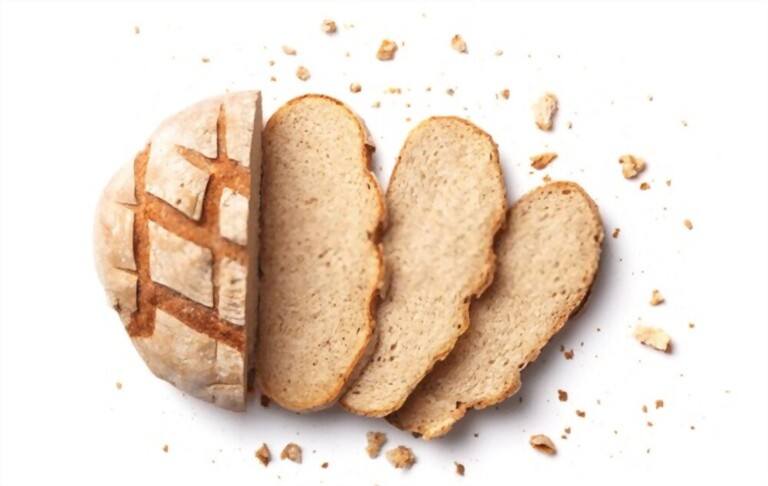Summer is regarded as the best season for baking. The obvious reaction to warmer weather would be to spend time outside rather than in the kitchen grilling, but the reverse is true. Even if you're working in the oven, the snacks you can create will keep you cool as you enjoy the process of making your own dessert. When you enter the kitchen, the many summer flavors will make you forget about the heat. Many baked items may also be served cold or frozen, making them ideal for coping with and enjoying the heat. And below are some different types of baking.
1. Different Types of Baking
Bread

Nothing beats taking a fresh loaf of leavened bread out of the oven. The tempting aroma alone makes baking one of the world's most famous dishes worthwhile! Learn everything about baking here, from the most fundamental components — flour, yeast, water, and salt — through the end product, including how to preserve your treasured loaf of bread.
Candy

Candy is also one of the different types of baking you cannot ignore. Candy and confectionery come in a variety of flavors, including nougat and chewy pralines, as well as marshmallows, caramels, and toffee. Sugar is what they all have in common, and how the sugar is processed decides what form of candy it is. Candy is classified into two types: crystalline and non-crystalline. Crystallized sweets, such as nougat and marshmallows, include crystals in their whole, but non-crystalline candies do not (think lollipops and caramel).
Cake

Layer cakes, cupcakes, snack cakes, rolls, and even cheesecakes are all available. Most cakes are classified into two types: those containing fat, such as butter or oil (reduced cakes), and those containing little or no fat (cakes with no foam or no foam).
Cookies

Cookies are popular all around the world, whether they are called "cookies," "cookies," or even "koekje." They may be stocked, sliced, molded, rolled and cut, baked into bars, filled, and adorned with multicolored ribbons. They might be simple or elaborate, an after-school snack or an important part of your family's holiday custom.
Egg tarts

Soursop is a thick, creamy dish that is often prepared with eggs, milk, or cream. They can be sweet or savory, and come in a variety of tastes and shapes. They range from cheesecake and flan to ice cream, pastry cream, and even lemon curd, and can be made on the stovetop or baked.
Chocolate

Chocolate is also one of the different types of baking that most people like. Chocolate is one of the most popular baking ingredients and a great passion for many of us, especially when it comes to sweets and confectionery. Understanding the numerous varieties of chocolate and when and how to utilize them might ruin your end product, from cocoa to milk chocolate to bitters.
Frosting, icings, and so on

Frostings, icings, fillings, buttercreams, and glazes all offer a final touch to our baked products, whether you're slathering a thick chocolate glaze over the carrot cake. Top it with a custard-based cake or a lemon-flavored cookie. Frostings, icings, and buttercreams, along with curds, custards, jams, and whipped cream, can be used as fillings as well as toppings.
Gluten-free

From pies to cakes, cookies to cakes, any baked treat may be made gluten-free if you know what ingredients to use, understand the procedures used, and have the correct recipes fantastic in your view.
Desserts that are frozen

On a hot summer day, nothing beats a large scoop of ice cream. While ice cream is a popular frozen delicacy, it also comes in a variety of flavors. Even better, the flavor of frozen sweets is only limited by our creativity.
Pasty

One of the different types of baking you should know is pasty. From the most basic pastry and tart doughs to more complicated layered doughs such as croissants, danishes, puffs, and phyllo, here's a broad array of bread-style baked foods that can be sweet or salty. They share a short list of ingredients — flour, some form of oil, water or other liquid, and typically salt — but they may be technically challenging. We'll go through the specifics so you can master this delectable genre.
Tarts and cakes

The most ethereal pie or tart shell can be described as buttery, spongy, smooth, soft, and crispy. This rather thin dough is used to encase sweet or savory contents and may be found in a variety of shapes and sizes, such griddle double pies, hand pies, fresh fruit tarts, and crostatas, to mention a few in some way. Learn more about this category's ingredients, thickeners, coatings, and troubleshooting.
Wedding dessert

Wedding cakes are traditionally elaborately decorated and layered cakes to commemorate the special occasion. Today, however, some couples defy convention by offering a variety of special delicacies, ranging from tiers of cupcakes to exquisite platters of cookies, or even chocolate, fruit, and desserts cheese and/or a tree Learn all you need to know about making a wedding cake, from easy to extraordinary, as well as a wedding options guide.
2. Tips That Should Know Before Baking
Always use the proper butter consistency
Because butter is the foundation for so many baked items, it's critical to have it prepared as directed. The temperature of butter has a significant impact on the texture of baked items. Baking recipes often ask for three different types of butter: softened, cold (or frozen, as in scones), and melted.
The room temperature is quite important
In terms of temperature, if a recipe asks for room temperature eggs or dairy products like milk or yogurt, be sure you use them. Recipes do this for a reason: room temperature ingredients emulsify far more easily into batter, resulting in a homogeneous texture throughout your baked dish. Consider cold, firm butter. The same is true for eggs, which provide significantly more volume to the batter when they are at room temperature.
Read the recipe
Reading ahead will help you understand how, why, where, and when you are about to accomplish anything. It will take you 1-5 minutes and might save you from wasting your supplies (and money!) on an unsuccessful meal.
Have ingredients ready
Before beginning a dish, measure your ingredients. Read over the ingredients and prepare them on your counter. When you begin recipes in this manner, there is very little space for error; you are not hurrying and racing through the preparation procedure. Make the recipe exactly as instructed initially, then, if you're feeling secure, make modifications as needed.
Discover how to measure
This is one of the most crucial baking techniques on this page. Excellent baking necessitates exact ratios, tried-and-true procedures, and tried-and-true recipes. Unlike cooking, you can't just put some stuff together, mix it up, and eat it anyhow. (Well, you can't most of the time!)
Conclusion
There are some different types of baking. Most people understand that cakes, sweets, and frozen desserts are baked products, but they forget that bread, pudding, and muffins are all baked foods. Start your new baking activity by selecting your favorite baking dish from our collection.













